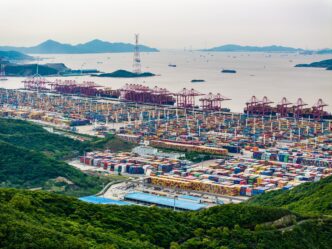As the new school year approaches, U.S. families are bracing for a noticeable increase in the cost of back-to-school essentials like sneakers, jeans, and T-shirts. This anticipated rise in expenses is attributed to the tariffs President Donald Trump has imposed on major exporting countries. Industry groups caution that if these tariffs are implemented as planned, they will significantly impact the American apparel market.
The American Apparel & Footwear Association highlights that about 97% of clothing and footwear purchased in the U.S. is imported, primarily from Asia. Leading brands such as Walmart, Gap Inc., Lululemon, and Nike manufacture most of their products in Asian countries. These nations have been affected by the president’s strategy to address trade imbalances, resulting in considerable tariffs. Chinese goods face tariffs of at least 54%, while Vietnam and Cambodia have rates of 46% and 49%, respectively. Bangladesh and Indonesia are taxed at 37% and 32%.
Foreign factories have historically helped U.S. companies keep labor costs low. However, neither these companies nor their overseas suppliers are likely to absorb the high tariffs. Countries like India, Indonesia, Pakistan, and Sri Lanka face similar tariff challenges, limiting them as alternative sourcing options.
The Footwear Distributors and Retailers of America (FDRA) predicts significant price hikes for shoes, noting that 99% of pairs sold in the U.S. are imports. For example, work boots from China may increase from $77 to $115, and running shoes from Vietnam could rise from $155 to $220. FDRA President Matt Priest emphasizes that lower-income families will feel the impact most acutely, with the cost of Chinese-made children’s shoes potentially rising from $26 to $41.
The tariffs on the top producers of finished fashion items and the materials for footwear and apparel have surprised U.S. retailers and brands. Many companies had already begun diversifying away from China due to trade tensions and concerns over human rights and environmental issues. Notable brands like Nike, Levi-Strauss, Ralph Lauren, and others have reduced their dependency on Chinese manufacturers. Meanwhile, Steve Madden plans to cut its imports from China by as much as 45% this year.
Reviving the American garment industry would be costly and time-consuming, given the decline in apparel manufacturing jobs. The U.S. lacks domestic sources for over 70 materials used in shoe production, necessitating the establishment of new factories to produce components like cotton laces and textile uppers.
Price increases in apparel follow three decades of stability. From 1994 to 2024, clothing costs remained unchanged for U.S. consumers, thanks to free trade agreements and offshoring. However, consumers who have experienced recent hikes in grocery and housing costs may be particularly sensitive to any increase in clothing prices.
According to a Barclays report, retailers with strong negotiating power and limited Asian sourcing will fare better in this tariff environment. This includes off-price retailers like Burlington, Ross Stores Inc., and TJX Companies. In contrast, companies like Gap Inc. and Urban Outfitters, with high product exposure in Asia, may face challenges. ThredUp, a secondhand clothing resale site, supports the elimination of a tax exemption that has allowed low-cost goods to enter the U.S. duty-free, potentially reducing environmental degradation.
As tariffs are expected to function like a consumer sales tax, they may exacerbate the income disparity in the U.S. The future sourcing of apparel, given the high tariff rates on Bangladesh, Vietnam, and China, remains uncertain, raising questions about whether domestic production will become a viable option.
Your World Now
- Consumer Costs: Families can expect to pay higher prices for clothing and footwear as tariffs drive up costs. This may strain budgets, especially for those with school-age children.
- Retail Adjustments: Retailers may need to renegotiate supply chains or increase prices, potentially impacting the variety and availability of products.
- Fashion Industry Shifts: Companies may explore new sourcing countries or invest in domestic production, reshaping the industry landscape.
- Economic Disparities: Higher prices may widen the financial gap between different income groups, as lower-income families are more affected by price increases.
- Environmental Considerations: The potential decrease in fast-fashion imports could lead to a reduction in overproduction and its environmental impact, encouraging more sustainable practices.








